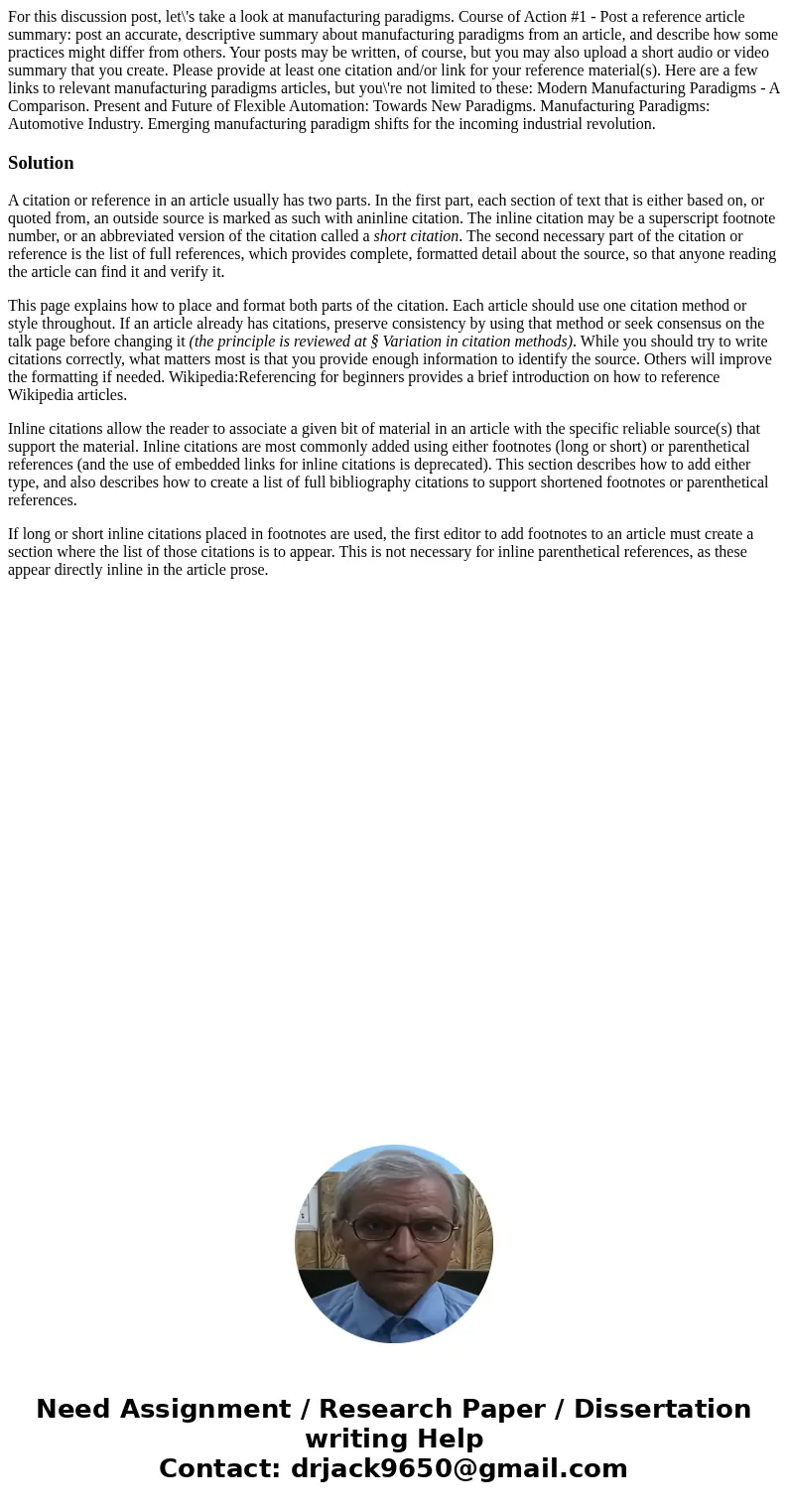For this discussion post lets take a look at manufacturing p
Solution
A citation or reference in an article usually has two parts. In the first part, each section of text that is either based on, or quoted from, an outside source is marked as such with aninline citation. The inline citation may be a superscript footnote number, or an abbreviated version of the citation called a short citation. The second necessary part of the citation or reference is the list of full references, which provides complete, formatted detail about the source, so that anyone reading the article can find it and verify it.
This page explains how to place and format both parts of the citation. Each article should use one citation method or style throughout. If an article already has citations, preserve consistency by using that method or seek consensus on the talk page before changing it (the principle is reviewed at § Variation in citation methods). While you should try to write citations correctly, what matters most is that you provide enough information to identify the source. Others will improve the formatting if needed. Wikipedia:Referencing for beginners provides a brief introduction on how to reference Wikipedia articles.
Inline citations allow the reader to associate a given bit of material in an article with the specific reliable source(s) that support the material. Inline citations are most commonly added using either footnotes (long or short) or parenthetical references (and the use of embedded links for inline citations is deprecated). This section describes how to add either type, and also describes how to create a list of full bibliography citations to support shortened footnotes or parenthetical references.
If long or short inline citations placed in footnotes are used, the first editor to add footnotes to an article must create a section where the list of those citations is to appear. This is not necessary for inline parenthetical references, as these appear directly inline in the article prose.

 Homework Sourse
Homework Sourse